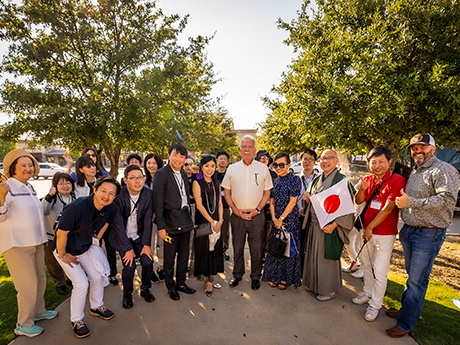By Jane Witowich, business operations manager, Day One Experts
In Collin County, two fast-growing Texas cities are charting a new path for economic development that prioritizes efficiency, adaptability and smart decision-making over traditional staffing models.
Fairview and Melissa, a pair of suburban communities facing explosive population growth and mounting development pressure, have adopted a fractional approach to economic development. Instead of creating or adopting full-time, in-house departments, both cities have strategically partnered with outside expertise to stay visible in national site selection circles, foster new investment and keep costs in check.

That decision, born out of necessity, is quickly proving to be a blueprint for others.
A Model Rooted in Strategy
The challenges faced by these teams in Fairview and Melissa are familiar to city leaders across Texas: developer interest is growing, expectations from residents are rising and yet budgets remain constrained. Hiring full-time economic development staff, building marketing infrastructure and funding national outreach campaigns — these initiatives often stretch beyond what smaller cities can reasonably afford.
Rather than let those constraints define them, Fairview and Melissa made the deliberate choice to adopt a fractional model. Through partnerships with experienced consultants such as Day One Experts, led by veteran economic developer “Super” Dave Quinn, CEcD, these municipalities have found a way to stay aggressive and relevant without adding full-time staff.
What sets this approach apart is that it not only reduces costs but also increases capability. The model offers immediate access to a broad professional network, industry insights and consistent representation in key markets. In practice, that means these cities are in conversations they might not otherwise reach.
Fairview Leads With Vision
Fairview, a community of just over 10,000 residents, has been intentional in its planning and proactive in its outreach. Led by city leadership that is focused on long-term sustainability, Fairview has prioritized quality development over rapid expansion.
Fairview’s Commercial Planned Development District (CPDD), which spans 800 acres and includes more than 450 acres of green space, offers a framework for carefully curated growth. At the center is a 242-acre mixed-use project from Billingsley Co. near U.S. Highway 75 and State Highway 121. Announced in 2020, the development brings a combination of office, retail and residential elements.
In 2024, Fairview secured an $8 million Collin County infrastructure grant to extend Fairview Parkway, improving connectivity and unlocking new development corridors. The city has also invested in community initiatives like the WEInspireTX Women Entrepreneurs’ Summit, an event designed to support female business owners.
By engaging Day One Experts to handle national outreach, Fairview’s leadership has kept the city’s focus tight, its strategy smart and its profile rising.
“Fairview’s elected officials recognized that staying competitive in today’s market would require a strategic approach to economic development, given our limited resources. Fairview’s approach has been to utilize partnerships rather than building in-house capabilities to maintain a strong presence in the marketplace while staying fiscally responsible,” says Julie Couch, Fairview’s town manager.
Melissa Builds for the Future
Just up the road, Melissa has embraced similar thinking. According to U.S. Census Bureau data, the city’s population has quadrupled since 2010, reaching over 21,000 today, and its growth trajectory shows no signs of slowing. City leadership, including Mayor Jay Northcut and the city council, are clear-eyed about what it takes to keep up.
Instead of expanding city payroll, city leaders have turned to a leaner model, bringing in external economic development expertise to help pursue major projects, manage development interest and represent Melissa on the regional and national stage.
That decision has paid off. Since 2020, Melissa has gone from having no grocery stores to becoming a retail destination via the following projects.
• The Kroger Marketplace, opened in October 2024, brought 123,000 square feet of space and more than 300 jobs to the city.
• A 131,000-square-foot H-E-B, now under construction, will include the grocer’s signature Texas barbecue restaurant and is set to be the largest in the Dallas-Fort Worth region.
• A 200,000-square-foot Walmart Supercenter is expected to open by mid-2025 following a groundbreaking this fall.
Melissa’s momentum extends beyond retail. The Dutch Bros. roasting facility, a $13 million, 65,000-square-foot industrial project, opened in 2024, and Melissa Gateway Village, a 55,000-square-foot downtown redevelopment, continues to bring new life to the city’s historic core. In addition, there is Melissa Industrial Park, a 27-acre development along State Highway 121 that features multiple buildings ranging in size from 10,000 to 50,000 square feet. The buildings were designed to support light industrial, warehouse and build-to-suit users.
Mayor Northcut says the city’s approach has been about aligning big goals with smart strategies.
“Melissa is one of the fastest-growing communities in North Texas, and with that growth comes big opportunities — but also pressure to prioritize our needs appropriately and efficiently,” Northcut says. “Partnering with Day One Experts lets us stay ahead of the curve. We’re investing in smart, strategic visibility without putting strain on our budget. It’s an innovative approach that allows us to compete at a high level while being good stewards of taxpayers’ dollars.”
Efficient Connections
For developers and site consultants, navigating outreach from dozens of cities can be overwhelming. The fractional model provides a single point of contact who can present multiple options with consistency and depth.
To understand the model’s broader impact, consider the insights of Thane Hutcheson, president of Five Points Strategic Advisors, a corporate site selection and incentives consulting firm that works with companies nationwide.
“Smaller cities like Fairview and Melissa often struggle to get on our radar,” Hutcheson says. “But with someone like ‘Super’ Dave Quinn advocating for them, they’re not only visible, they’re compelling. His relationships and reputation open doors these communities couldn’t access on their own. The TexasEDConnection connects smaller, often under-resourced communities to site consultants in a way that feels personal and credible — something a spreadsheet or email blast can’t replicate.”
“Fractional services like Day One Experts are one of the smartest evolutions in local economic development,” he adds. “When you have someone like Quinn representing multiple communities, it simplifies the process, builds trust and gives developers access to a broader range of opportunities without the typical legwork. It’s high-efficiency, high-impact work.”
A Blueprint Worth Watching
Since 2020, the results speak for themselves: transformative retail projects, multimillion-dollar infrastructure improvements and increased visibility with national developers.
Fairview and Melissa didn’t wait for more resources to materialize — they adjusted their approach, aligned their leadership and embraced a model that matched their needs.
The fractional approach to economic development isn’t just about filling a staffing gap. It’s about recognizing the value of flexibility, connection and smart governance. In Fairview and Melissa, that recognition is turning into real growth.
As Quinn said when accepting his Industrial Asset Management Council (IAMC) award, “Collaboration and connection drive economic success.”
For smaller cities trying to stretch limited resources, the path forward may not be to hire more staff, but to work smarter. In Fairview and Melissa, that smarter path runs through the choices their leaders made.
— This story originally appeared in the July 2025 issue of Texas Real Estate Business magazine.


